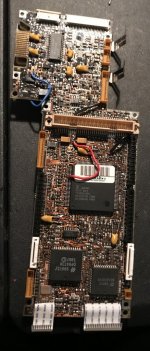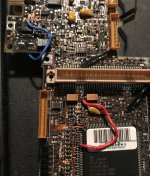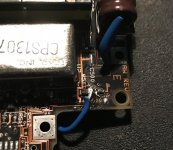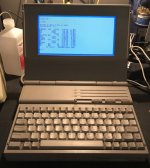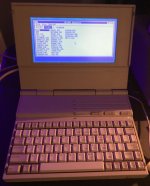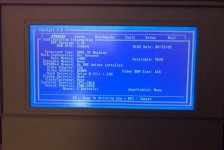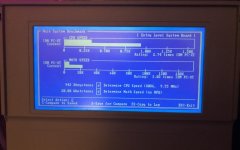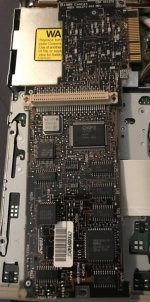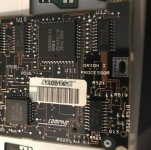compaqportableplus
Veteran Member
I've been trying to repair all of my LTEs lately. This is one that I've had for about 5 years, and it had never worked correctly. The backlight on it worked intermittently for a short while when I first got it, and sometimes it wouldn't even POST at all.
This was way before I knew how to solder, so "reapping" it wasn't even an option at that point. Fast forward about 5 years, and I now I am quite handy with a soldering iron! So let's repair this thing!
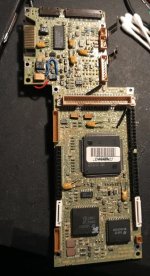
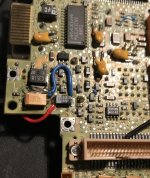
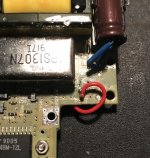
Fully recapped it, found some broken traces and had to run two jumper wires. One of the traces I found that was broken was close enough together that I was able to just bridge it with some solder. My god this was hard work though, took me forever to find the broken tracks, and man was my back and neck hurting by the time I was done! But it was well worth it in the end!
Now that's one happy LTE!:

Got to fix the sticky bumper in the hard drive, recap and replace the belt in the floppy drive, and it'll be done!
The LTE 8086 is an interesting machine. It was the only 8086 notebook that Compaq ever made. This is also the most compact XT-class machine I own too!
Next one to repair is a Compaq LTE/286 with the same issue! This one should be much easier, as it's probably the same traces that are broken.
Thankfully, I have a spare 20MB drive I can use for now until I can find another 40MB drive. These laptops use a funky 3.5" Conner Peripherals drive that's a little shorter and much thinner than a standard drive with a downsized IDE connector. At some point, I'll build and adapter for it, and then I can use a 2.5" drive! having a 120MB or so in one of these would be amazing. If I did do that, I would definitely miss the unique sound that these drives make though!
Really glad that the LTE and LTE/286 were the only LTEs to use electrolytic caps on the motherboard! The LTE 386s/20 and onward are all-tantalum on the system board. Really makes life easier! This 8086 is all-tantalum now though
This was way before I knew how to solder, so "reapping" it wasn't even an option at that point. Fast forward about 5 years, and I now I am quite handy with a soldering iron! So let's repair this thing!



Fully recapped it, found some broken traces and had to run two jumper wires. One of the traces I found that was broken was close enough together that I was able to just bridge it with some solder. My god this was hard work though, took me forever to find the broken tracks, and man was my back and neck hurting by the time I was done! But it was well worth it in the end!
Now that's one happy LTE!:

Got to fix the sticky bumper in the hard drive, recap and replace the belt in the floppy drive, and it'll be done!
The LTE 8086 is an interesting machine. It was the only 8086 notebook that Compaq ever made. This is also the most compact XT-class machine I own too!
Next one to repair is a Compaq LTE/286 with the same issue! This one should be much easier, as it's probably the same traces that are broken.
Thankfully, I have a spare 20MB drive I can use for now until I can find another 40MB drive. These laptops use a funky 3.5" Conner Peripherals drive that's a little shorter and much thinner than a standard drive with a downsized IDE connector. At some point, I'll build and adapter for it, and then I can use a 2.5" drive! having a 120MB or so in one of these would be amazing. If I did do that, I would definitely miss the unique sound that these drives make though!
Really glad that the LTE and LTE/286 were the only LTEs to use electrolytic caps on the motherboard! The LTE 386s/20 and onward are all-tantalum on the system board. Really makes life easier! This 8086 is all-tantalum now though
Last edited:

